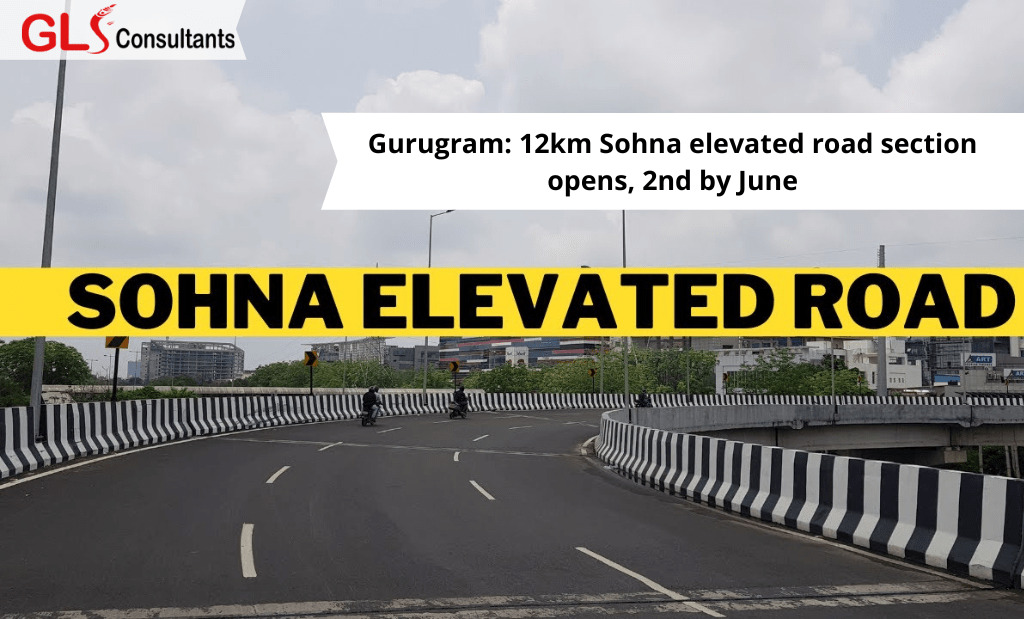GURUGRAM: Four years after construction began, a 12km of the Sohna Elevated Road, connecting Badshapur Sohna Elevated Road, connecting Badshapur with Sohna, was opened to commuters this month, NHAI officials said on Friday.
The remaining part, a 9km-section to connect Badshapur with Rajiv Chowk on the Delhi-Gurugram Expressway and give traffic to and from the expressway a signal-free ride till Sohna, will be opened in June, they said.
We have already completed 100% of the work on Package 2 of the elevated road and opened it to commuters from April 1. We have also started collecting toll for the stretch,” said a senior official of the National Highways Authority of India. NHAI is responsible for the project. The 12km stretch cost authorities Rs 607 crore to build. Construction for Package 1, the 9km route, is 85% complete and “we expect it to be ready by June”, the official cited above said.
The Rs 1,300 crore-project was conceptualised to reduce the current three-hour travel time between Gurugram and Alwar to less than two hours. It will bypass several busy and congested junctions, including the Vatika Chowk in Gurgoan. The elevated road will also be a key link to the Delhi-Mumbai Expressway corridor that will connect India’s two largest urban centres via Haryana, Rajasthan, Madhya Pradesh and Gujarat. Touted as the “world’s longest highway”, the 1,380-km-long expressway is expected to be ready by March 2023.
Work began for the elevated road in 2018 with a deadline of 25 months — or 2020. It was repeatedly held up due to delays in shifting utilities such as electricity lines, the hard lockdown prompted by the pandemic, the bans on construction due to high pollution levels in NCR and the collapse of a section of the road in August 2020 that suspended work for a month.
The latest deadline was decided for June 2022.
Urban planning experts told TOI that the project will help long distance traffic, but it may not give relief to local and regional commuters because of few exit/entry points on the road. Apart from its start (Rajiv Chowk) and end (Sohna) points, the elevated road so far has just one exit/entry route in between – at the toll plaza near Ghamroj village in Gurugram district. There are no direct routes to get on and off the elevated road despite it running alongside several busy stretches such as the Netaji Subhash Marg and Southern Peripheral road.
“There are three types of traffic on Sohna road, that which is very local, that which has got some distance but their origin and destination is along Sohna road. And the third is long distance. With this elevated road, long distance traffic will get managed and development will also get a boost on the Sohna side, which was getting neglected earlier,” said Sewa Ram, the head of department of Transport Planning, School of Planning and Architecture (SPA) in Delhi.
“However, concerns will remain about the two other kinds of traffic that are merging in the area. Some level of limited access needs to be provided to these as well to ensure mobility can be managed completely. The idea is that the elevated road should not only work for the by-passable traffic but provide some access to the settlements in between as well,” he added.
Residents have also questioned the extent to which the road will be effective for them. “If they had created more entry and exit points on the road, the number of people it would have benefitted would have been more. They should have created an access point at Vatika Chowk at least, so that people living in condominiums on the Southern Peripheral Road (SPR) could also utilise it,” said Ananya Sinha, a resident of Sector 69 in Gurugram.
NHAI officials, when asked about this criticism, said multiple entry and exit points could not be made since the elevated road was planned as an “access controlled highway” and a high speed corridor. Giving additional access points, they said, would have defeated its purpose.

